07:46, August 13, 2023
Lien Son town (Lak district) has just bustlingly organized the first Mass Arts Festival in 2023 with the theme "Towards the Central Highlands".
The festival was attended by 12 mass art troupes from communes and district police units with more than 300 actors and artists. 66 performances of various genres including solo singing, duets, group singing, accompanying dances, illustrative dances, "independent dances", instrumental ensembles, skits, costume shows... demonstrated the cultural diversity of a district that has a name on the world tourism map. Although only 4/12 groups developed the program's theme (My hometown's great forest - Bong Krang; For the peace of the village - District police; The fragrance and color of the Central Highlands - Buon Tria; The renewed Central Highlands - Buon Triet), the singing content ranged from revolutionary songs ("Uncle Ho, a boundless love", "Singing forever the military march", "Uncle Ho's grace with the Central Highlands people", "The sacred words of Uncle Ho", "We are police soldiers", "The unforgettable song"...) to M'nong folk songs (To Tong melody, Village Solidarity), Cheo melodies (Building new rural areas), ancient then singing (Butterfly Palace illuminates the path), new then singing (Moon illuminates Uncle Ho's path) and Tinh lute...
Although there were not many outstanding voices, the female soloist “Unforgettable Song” of Lien Son town, especially the male voice of Yang Tao commune with the song “Passionate Highlands” convinced the audience not only with her beautiful voice, but also with her expressive singing and delicate handling of the work. The “artistic” appearance of the young rock singer H'Han Yang Hi (Dak Phoi commune) not only delighted the judges and the audience but also promised a talented young generation of Lak. However, there were many beautiful voices but they sang out of tune (off-key, off-key, out of tune), out of tune (too high, or too low compared to the voice...); the duets, the group singing performances, despite great efforts in staging, most of them did not have harmony, even without singing in succession or responding, making the performance less attractive and lacking in diverse performance styles.
 |
| Performance at the festival. Photo: Thanh Binh |
The least was the instrumental performance, perhaps due to the close time between practice and performance, so there were only four pieces. The ensemble “The girl sharpening bamboo poles” by the District Police performed quite well, but unfortunately only brought out the technique of the organ, while the performance of the ching kram was only accompaniment, not meeting the requirements of the “ensemble” genre. The solo piece of the five-tone Loi Lo by Buon Triet commune brought the clear, new sounds of the Northern countryside, contributing its own voice to the harmony in the highland space. The shrill sound of the bamboo flute by Buon Tria in the song “The girl sharpening bamboo poles” unfortunately could not keep up with the rhythm of the accompaniment. The group of five women playing the Du Ding (ding tut) tried very hard, but the sound and rhythm were still out of sync. Another regrettable thing is that at the festival there are very few folk songs, bamboo and wooden musical instruments, and the Ede and M'nong lithophones, which are extremely diverse...
In return, the dense sound of the bor - 6 ching without knobs (M'nông Gar), or gong peh - 3 with knobs (M'nông Rlâm), ching jhô (Bih), ching knah (Ede) shows that the strength of gong ching culture still exists, hidden strongly in the villages in Lak. Up to 7/12 groups participating in the festival brought their best gong ching group to show off their talent to their friends. The performance of the ching jhô group (Ea R'bin commune) was graceful, lively and unique, completely different from the leisurely rhythm of the ching jhô group of the Bih group in Buôn Trấp (Krông Ana district). In particular, the female drummer who kept the rhythm for the whole group was not only a skilled artist but also very feminine, making the audience extremely admiring. The gong and ching ensembles of Dak Lieng, Nam Ka, Yang Tao, Lien Son, and Buon Triet, whether performed by the elderly or middle-aged generations, still performed their best for the “colors and flags” of the nation and the locality. The competition became eager but still no less skillful.
The genre that “occupies the most airwaves” in the programs of the troupes is dance. As mentioned above, there are all kinds of genres: Dance is a performance based on instrumental music chosen by units in Lak district to suit the themes and staged quite successfully, such as Gong Dance (Yang Tao), Central Highlands Gong Festival (Buon Tria), Sap (Dak Lieng), Central Highlands Gong (Krong No), Afternoon by the Lake (Ea R'bin)...; dance accompanies singing such as "Uncle Ho's Grace to the Central Highlands People" (Buon Tria), "Bustling and bustling Dak Lak plateau" (District Police)...
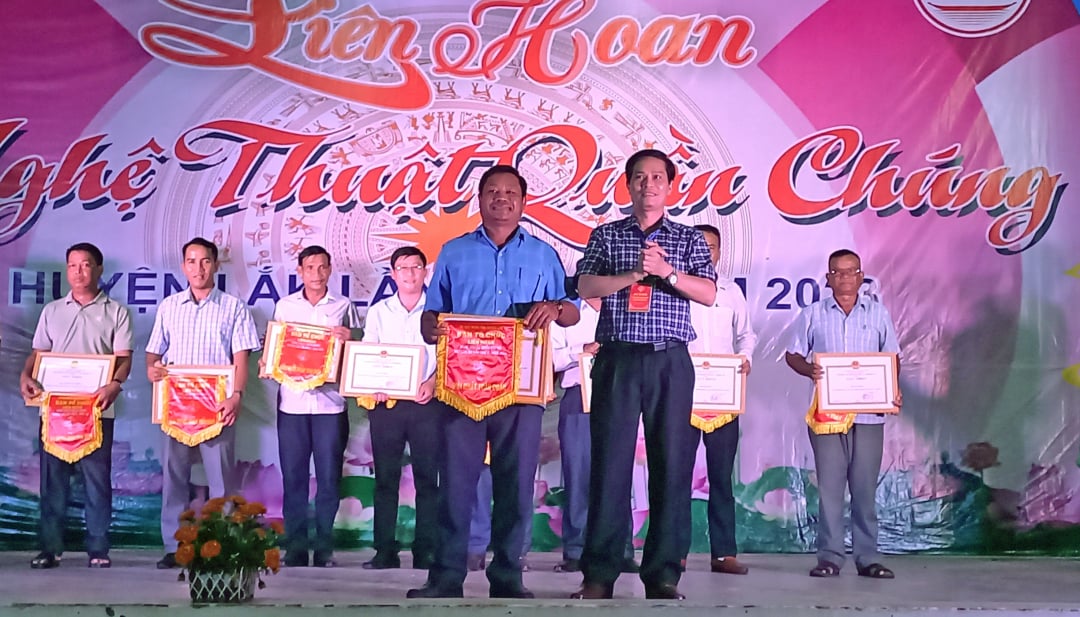 |
| The organizing committee awarded the first prize to Yang Tao commune. Photo: Thanh Binh |
The impression at this festival is a very successful art form: that is the introduction of fashion or traditional costumes. 8/12 groups have this performance, all very creative. Simply the traditional costumes of 5-7 ethnic groups living in the area (Dak Phoi, Buon Triet, Buon Tria); traditional and improved brocade fashion of adults and children is extremely cute (Bong Krang); M'nong costumes are guided by the sound and rhythm of the gong peh orchestra with each graceful step (Lien Son)... Charming Mong girls with handkerchiefs and pink umbrellas of Dak Nue commune. Most special is the fashion show of Yang Tao commune: not only traditional costumes with familiar ceramic vases and gourds of the village, but you also designed extremely charming costumes using brocade combined with tissue paper, newspaper, plastic garbage bags to convey your message of "Protecting the colors of the Central Highlands".
Even more wonderful is the appearance of the original M'nong dresses of the two M'nong Rlam and Gar groups that were thought to have been lost for decades. The form and patterns are completely different from the dresses of the M'nong Preh group (Dak Nong province), which have been improved in color and have long been considered the M'nong women's costume model. This is a good news not only for the M'nong ethnic group in Dak Lak but also for the cultural sector. Hopefully, from this appearance, Lak district will immediately have specific measures to preserve and promote the weaving profession, patterns and original costumes of the M'nong people, multiplying them throughout the province.
The sounds of the Chưng bor, Gong Peh, Ching Knah orchestras, M'nông Tơ tuong folk songs, Cheo melodies, Then songs, Tinh and Ching Kram instruments spread far and wide across the surface of Lak Lake. The bustling atmosphere carries the joy of solidarity and the value of precious cultural heritages, following the sun and wind to all the water ports near and far...
H'Linh Nie
Source















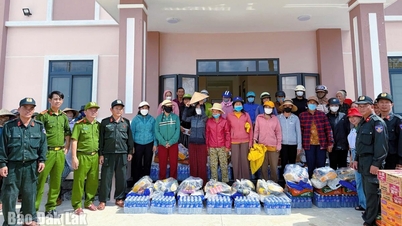








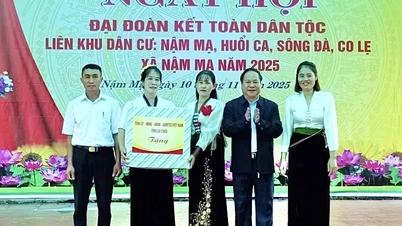













































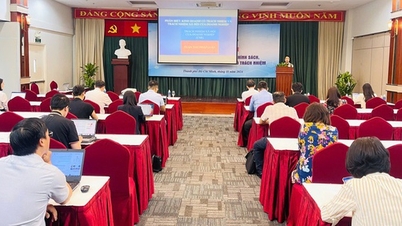



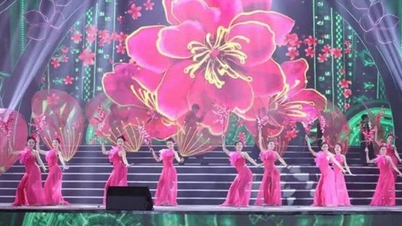


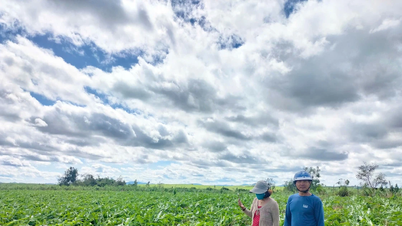






![Dong Nai OCOP transition: [Article 3] Linking tourism with OCOP product consumption](https://vphoto.vietnam.vn/thumb/402x226/vietnam/resource/IMAGE/2025/11/10/1762739199309_1324-2740-7_n-162543_981.jpeg)











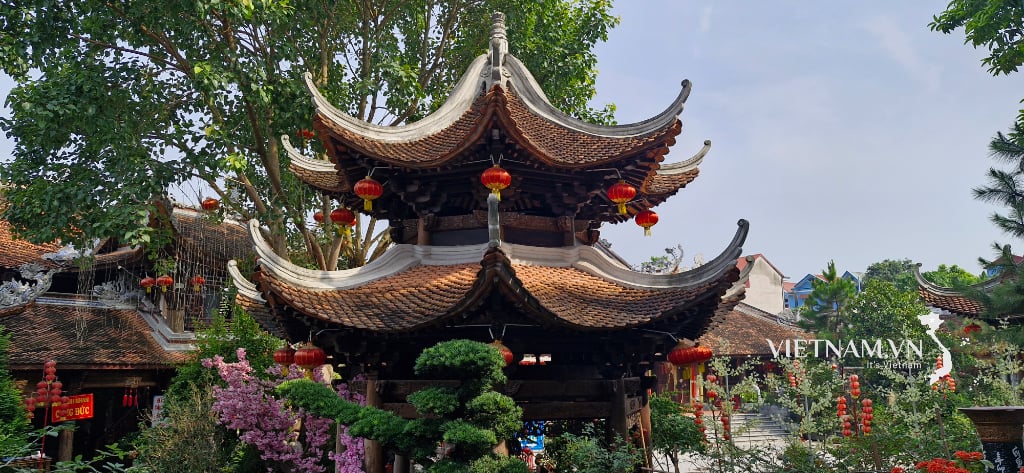
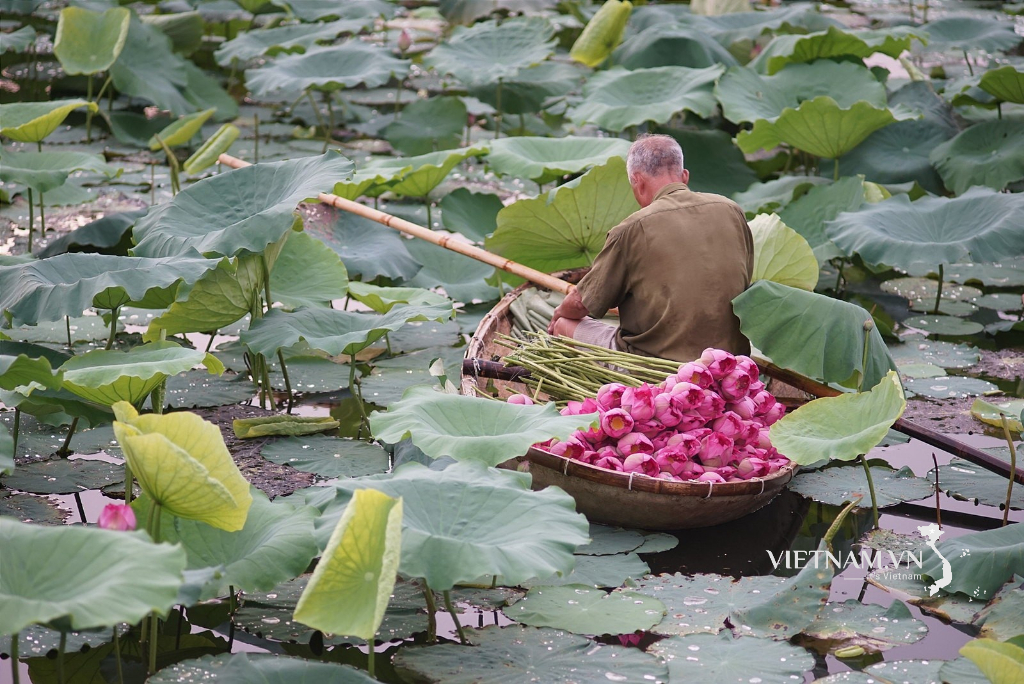
Comment (0)